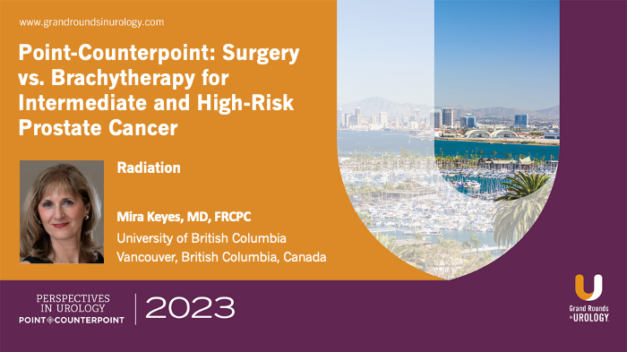Point-Counterpoint: Surgery vs. Brachytherapy for Intermediate and High-Risk Prostate Cancer – Brachytherapy
Mira Keyes, MD, FRCPC, presents an informative discussion on the benefits of brachytherapy compared to surgery and external beam radiation for prostate cancer treatment. She highlights the elusive outcomes and challenges of current treatments, emphasizing the importance of patients’ quality of life and cost considerations.
Dr. Keyes explores how brachytherapy outperforms surgery in terms of PSA (prostate-specific antigen) and metastasis-free survival outcomes in high-risk and unfavorable intermediate-risk patients. These findings suggest that brachytherapy can effectively target and control aggressive forms of prostate cancer.
Additionally, she addresses the misconception that brachytherapy is only suitable for certain risk groups, explaining its effectiveness across all risk stratifications. This broader applicability of brachytherapy allows more patients to benefit from this targeted treatment option, potentially reducing the need for invasive surgeries.
The presentation also delves into the topic of toxicity, showcasing the manageable side effects of brachytherapy compared to surgery. By minimizing damage to surrounding tissues, brachytherapy reduces the risk of complications such as urinary incontinence and erectile dysfunction, which are more commonly associated with surgery.
This lecture is part of a Point-Counterpoint debate. Its opposing lecture is “Point-Counterpoint: Surgery vs. Brachytherapy for Intermediate and High-Risk Prostate Cancer – Surgery.”
Read More

